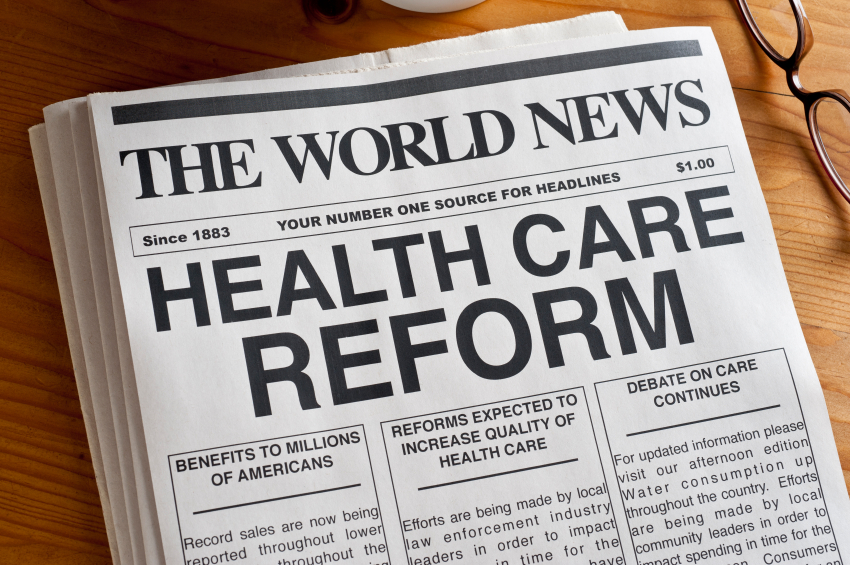August Research Roundup: What We’re Reading

By Emma Walsh-Alker
For the August edition of our monthly research roundup, CHIR said farewell to summer by reviewing the latest health policy research. This month, we summarize studies on how the end of the COVID-19 public health emergency (PHE) will impact health coverage, global efforts to achieve universal health coverage, and the effects of eliminating nominal marketplace premiums.
HHS Office of the Assistant Secretary for Planning and Evaluation (ASPE), Unwinding the Medicaid Continuous Enrollment Provision: Projected Enrollment Effects and Policy Approaches, August 19, 2022. The COVID-19 PHE has significantly impacted health insurance enrollment in the U.S. The continuous Medicaid enrollment requirement, established by the Families First Coronavirus Response Act, has prevented states from disenrolling Medicaid beneficiaries from coverage during the pandemic, prompting record Medicaid enrollment across the country. However, once the PHE formally ends and the continuous coverage requirement expires, states face the daunting process of resuming eligibility determinations for their Medicaid enrollees. ASPE researchers used previous survey data on insurance status and income to provide updated projections on coverage transitions at the end of the PHE, and recommend strategies to prevent coverage losses.
What it Finds
A projected 82.7 percent of Medicaid beneficiaries (71.7 million people, based on December 2021 enrollment data) will stay in Medicaid once the PHE ends, while 17.4 percent or 15 million current Medicaid enrollees will leave the program:
8.2 million people, or 9.5 percent of the individuals leaving Medicaid, are estimated to become ineligible for Medicaid for a variety of reasons, such as changes in income or moving to another state.
The other 6.8 million people (7.9 percent) are estimated to be disenrolled despite continuing Medicaid eligibility due to “administrative churn” caused by difficulties renewing, states’ inability to contact current beneficiaries, and other administrative burdens.
Variation in administrative churn levels could dramatically influence the level of coverage loss at the end of the PHE, ranging from 5.8 to 12.7 million people depending on whether churn rates were less than, equal to, or greater than the level measured in 2016.
Across all of the above scenarios, children and young adults, Black, and Latino Medicaid and/or CHIP enrollees would face disproportionately high levels of administrative churn.
Of the 8.2 million individuals predicted to lose Medicaid eligibility at the end of the PHE, an estimated two-thirds will enroll in employer-sponsored coverage and 2.7 million will be eligible for subsidized coverage on the marketplace.
The majority of the 2.7 million marketplace-eligible individuals will be able to enroll in a zero-premium plan with enhanced premium tax credits, due to the temporary marketplace subsidy enhancements in the American Rescue Plan Act (recently extended through 2025 under the Inflation Reduction Act).
Researchers offer a number of recommendations for stakeholders to reduce churn and help eligible individuals transition to affordable coverage on the marketplace. These include verifying that state agencies have accurate contact information for Medicaid enrollees; ensuring strong coordination between Medicaid and the marketplace; and investing in staff that process redeterminations, navigators, and other consumer resources to support the high volume of coverage transitions.
Why it Matters
Widespread health coverage gains, through Medicaid and on the marketplace, are a silver lining of the pandemic; the national uninsurance rate hit a record low of 8 percent at the beginning of this year. But as ASPE’s data show, as many as 15 million individuals are at risk of becoming uninsured once the PHE expires. This group is disproportionately comprised of children, young adults, and people of color, underscoring the health equity implications of mitigating coverage losses. Gaps in insurance coverage also threaten continuity of care for patients currently receiving treatment. ASPE’s latest projections and corresponding recommendations offer states and advocates additional tools as they prepare for this unprecedented coverage event.
Simiao Chen, Pascal Geldsetzer, Qjushi Chen, Mosa Moshabela, Lirui Jiao, Osondu Ogbuoji, Ali Sie, Rifat Atun, and Till Bärnighausen, Health Insurance Coverage in Low- And Middle-Income Countries Remains Far from Universal, Health Affairs, August 2022. Authors analyzed health insurance coverage data from 2006 to 2018 in 56 low- and middle-income countries to assess the relationship between health coverage and economic development, health equity, and sociodemographic variation.
What it Finds
Using nationally representative household samples of roughly two million participants aged 15-59, researchers found that one in five people (20.3 percent) had health insurance across the 56 low- and middle-income countries studied.
Seven countries had coverage levels above 50 percent, and only three – Turkey, Rwanda, and the Kyrgyz Republic – had coverage levels above 70 percent.
Europe and the Eastern Mediterranean regions had the highest coverage levels of about 44 percent, while sub-Saharan Africa had the lowest reported coverage levels of 7.7 percent.
In most countries studied, the majority of the population did not have health insurance.
Having health insurance coverage does not necessarily mean that survey participants have access to affordable health care. The study did not ascertain data on deductibles and cost-sharing that can significantly impact access to care, especially for low-income populations.
In the 48 countries with data available on coverage type, 71.4 percent of covered individuals had public coverage (primarily through social security), while 28.6 percent had private coverage (primarily through an employer or purchased on the commercial market).
Countries with higher shares of public insurance coverage tended to have less wealth inequality than countries with mostly private insurance coverage.
Individuals who were male, older, more educated, and wealthier were generally more likely to have health insurance across the countries studied than individuals without those characteristics.
The strength of these demographic associations varied by country—the sub-Saharan Africa region had the strongest correlation between education and household wealth and health coverage, which researchers suggest could point to high levels of inequality in health care access.
In 45 countries, people living in rural areas were less likely to report having health coverage.
There was also a positive correlation between GDP per capita and rates of health coverage.
Authors identified factors associated with relatively high coverage levels in a select few of the countries studied, including structured governmental oversight of national health coverage programs, stable economic conditions, and an inclusive societal commitment to health care reform.
Why it Matters
Although a few low- and middle-income countries have made significant progress towards the goal of universal health coverage, this study illustrates the need for widespread coverage expansion across the globe. In particular, policymakers (both internationally and in the United States) should consider the equity implications of expanding public versus private insurance for underprivileged groups who are more likely to lack coverage. The study results add to a growing body of literature suggesting that in lower-income countries, private insurance generally benefits wealthy citizens, while public insurance helps boost health coverage more broadly, regardless of income level.
Matthew Fiedler, Eliminating small Marketplace premiums could meaningfully increase insurance coverage, Brookings, June 29, 2022. Research shows that owing small premiums, even of a few dollars or less, can significantly discourage health insurance enrollment. This study estimates how many marketplace enrollees currently pay these small premiums, and how eliminating this nominal cost through either legislative or administrative changes would impact coverage take-up.
What it Finds
The author estimates that 404,000 people enrolled in marketplace coverage through the federal marketplace platform, HealthCare.gov, currently pay a “small premium” (a net premium under 0.5 percent of the gross premium), averaging payments of $3 a month. This group represents 5 percent of total HealthCare.gov enrollment.
About 60 percent of enrollees paying small premiums are at or below 150 percent of the federal poverty level.
68 percent of impacted enrollees reside in states that have not expanded Medicaid.
Most small premiums occur when a marketplace plan covers non-essential health benefits (EHB), such as non-pediatric dental and vision coverage or certain abortion services. Under the Affordable Care Act (ACA), premium tax credits (PTCs) only apply to the EHB. As such, subsidized marketplace enrollees must pay out of pocket for the portion of their premium covering non-EHB services. The author notes that if this “special rule” was not in effect, the two most affordable silver plan options on the marketplace would always have a $0 premium.
Increasing PTCs or changing insurer rules to waive payment of the remaining few premium dollars owed could eliminate nominal premiums that deter enrollment.
The author estimates that increasing PTCs to cover the full premium cost for those facing small premiums would lead to 48,000 more people enrolling on HealthCare.gov annually, and would cost the federal government $336 million.
The alternative approach, allowing or requiring insurers to waive payment of small premiums, may bypass a need for new federal legislation to change how PTCs are calculated. However, insurers may charge higher premiums to accommodate the cost of waiving nominal premiums, and a permissive policy would still leave many consumers with a small monthly bill.
Without expanded PTCs instituted under the ARP, many enrollees who are currently paying small monthly premiums would see their premiums rise sharply.
Why it Matters
Eliminating small marketplace premiums would likely increase health coverage enrollment, particularly for low-income consumers in states that have not expanded Medicaid. This policy change could also help ease coverage transitions from Medicaid to the marketplace once the PHE expires, since individuals losing Medicaid eligibility will generally be accustomed to not paying a monthly premium. Federal and state policymakers should weigh the benefits and costs of the various approaches described in this analysis to increase take-up of marketplace coverage.




